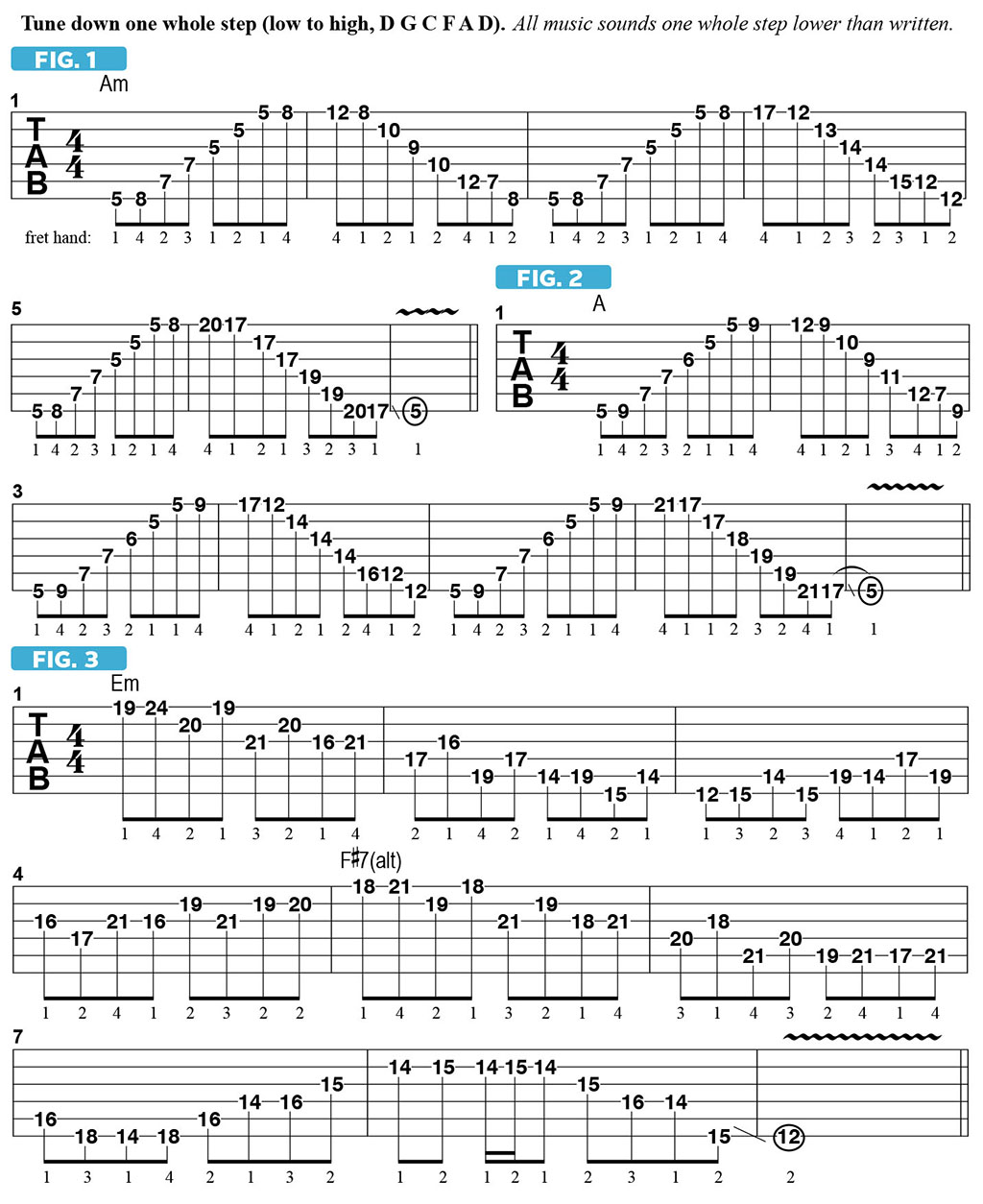How to Perform Arpeggios with Barring
Learn a new approach to playing arpeggios—specifically in regard to fret-hand technique—from our new columnist, Jason Richardson!
Hello everyone, and welcome to my new Guitar World instructional column. Over the course of the next few months, I will be demonstrating a wide variety of the techniques that I use everyday in both practice and performance to keep my chops in tip-top shape.
I’d like to start off with a look at my approach to playing arpeggios, specifically in regard to fret-hand technique. I exclude barring from virtually all triadic shapes when playing ascending and descending arpeggios on every part of the fretboard. I feel that omitting barring helps tremendously in eliminating any possibility of two notes ringing together while moving from note to note through the arpeggio shapes. The literal definition of an arpeggio is a “broken chord,” so none of the notes are supposed to ring simultaneously.
The first two examples in this lesson will focus on A minor and A major triadic arpeggios. This means the arpeggios are built entirely from the 1(root) 3 and 5: in A minor, the notes are A C E; in A major, the notes are A C# E. While playing through these examples, keep in mind that I tune my guitar down one whole step (low to high: D G C F A D) so everything sounds a whole step lower than written.
FIGURE 1 is based on Am, and this exercise is designed to cover Am arpeggio shapes that move between fifth and 17th positions. In bar 1, I ascend through two octaves of the Am triad in fifth position. Pay close attention to the fret-hand fingering: for example, following the first two notes that are fretted with the index finger and pinkie (1 and 4, respectively), the third note is fretted with the middle finger (2) and the fourth note in fretted with the ring finger (3). Using this “crossover” technique as opposed to “rolling” the fingertip of a given finger to fret consecutive notes will yield a much cleaner sound. The crossover technique is used again to sound C E A on the top three strings as I switch from index to middle to index (1 2 1).
In bar 2, I descend through the Am arpeggio in eighth-ninth position. Bar 3 is a repeat of bar 1, and in bar 4 I move up to 12th position. Bar 5 restates bar 1, and then bar 6 is the same as bar 1 but 12 frets and one octave higher. Follow the fret-hand fingerings closely here, while sticking with alternate (down-up) picking and striving for the cleanest execution attainable. FIGURE 2 illustrates the same technique as applied to A major triads. Once again, play through these shapes slowly and carefully.

In FIGURE 3, I apply these techniques to a few different chordal types, combining the major and minor triadic shapes. In bars 1-4, the shapes are derived from Em triads, utilizing the notes E G B and played in a “low-high, low-high” sequence. In bar 5, I switch to lines based on F#7b9 arpeggio, utilizing the notes F# A# C# E G, with a few other intervals, to achieve and F# altered-dominant sound. The idea here is to incorporate the previous arpeggio pattern in a more melodic, less predictable line.
Virtuoso American metal guitarist Jason Richardson is best known for his work with All Shall Perish, Born of Osiris and Chelsea Grin. He’s currently lead guitarist for All That Remains.
Get The Pick Newsletter
All the latest guitar news, interviews, lessons, reviews, deals and more, direct to your inbox!
“There are so many sounds to be discovered when you get away from using a pick”: Jared James Nichols shows you how to add “snap, crackle and pop” to your playing with banjo rolls and string snaps
Don't let chord inversions bamboozle you. It's simply the case of shuffling the notes around







![Joe Bonamassa [left] wears a deep blue suit and polka-dotted shirt and plays his green refin Strat; the late Irish blues legend Rory Gallagher [right] screams and inflicts some punishment on his heavily worn number one Stratocaster.](https://cdn.mos.cms.futurecdn.net/cw28h7UBcTVfTLs7p7eiLe.jpg)


